Reconstituted Abalone for Knife Handles
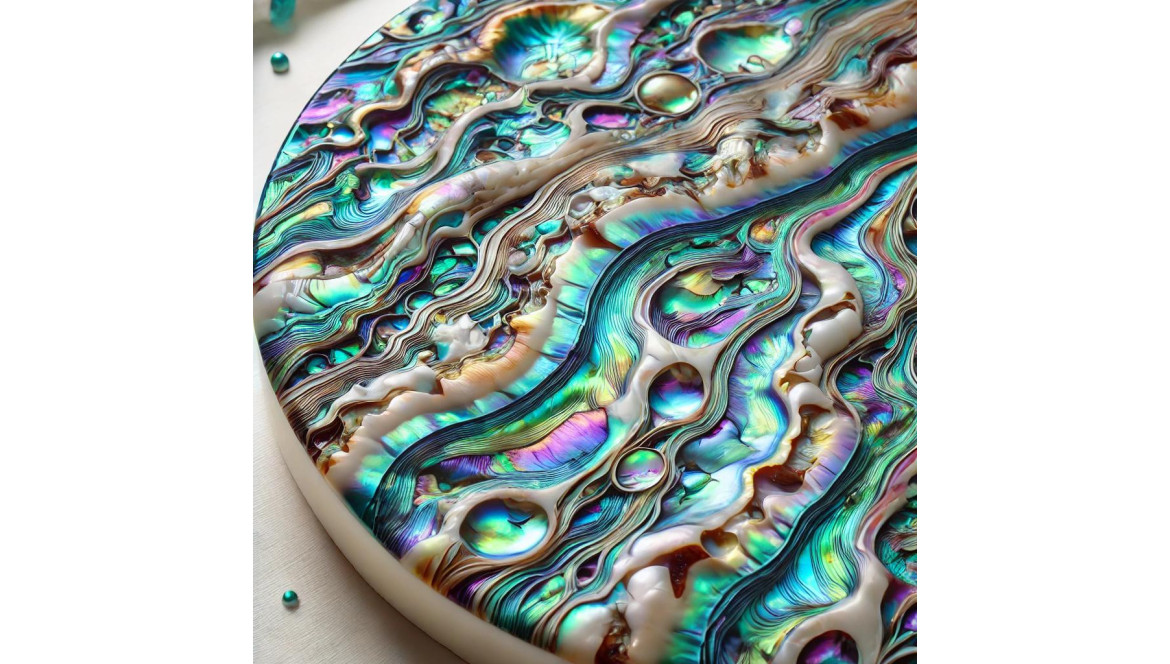
Discover reconstituted abalone in PMMA resin, a prestigious material combining aesthetics and durability, ideal for creating knife handles. Learn about its origin, characteristics, and get tips on how to work with it effectively.
Reconstituted Abalone in PMMA Resin for Knife Handles: Origin, Characteristics, Use, and Tips
Introduction
Abalone, a prized material for its natural brilliance and shimmering patterns, has become an essential resource for artisans seeking to add a touch of elegance to their creations. Often used in the making of knife handles, it is appreciated by both amateurs and professionals. Reconstituted abalone, combined with PMMA (polymethyl methacrylate) resin, offers a unique combination of beauty and durability. In this article, we will explore the origin and characteristics of this prestigious material, its advantages for artisans, and its uses in history and modern craftsmanship.
.jpg)
1. What is Abalone?
Abalone, known in French as "ormeau," is a marine mollusk characterized by a nacreous inner shell. It is primarily found in temperate and tropical waters, notably along the Pacific coasts from California to Japan. This mollusk is particularly prized for its shell, which has been used for millennia in crafts, particularly in the creation of jewelry and decorative items. Its iridescent and colorful nacre is the main attraction for artisans.
2. Reconstituted Abalone: A Prestigious Material
Reconstituted abalone is made from natural abalone pieces that are ground, mixed with PMMA resin, and then solidified. This process captures the natural beauty of abalone while enhancing its durability and ease of shaping. PMMA, a transparent and resistant thermoplastic polymer, provides additional protection while maintaining the iridescent shine of the original material. Reconstituted abalone thus offers a durable and more accessible alternative to natural abalone pieces while preserving a high-end aesthetic.
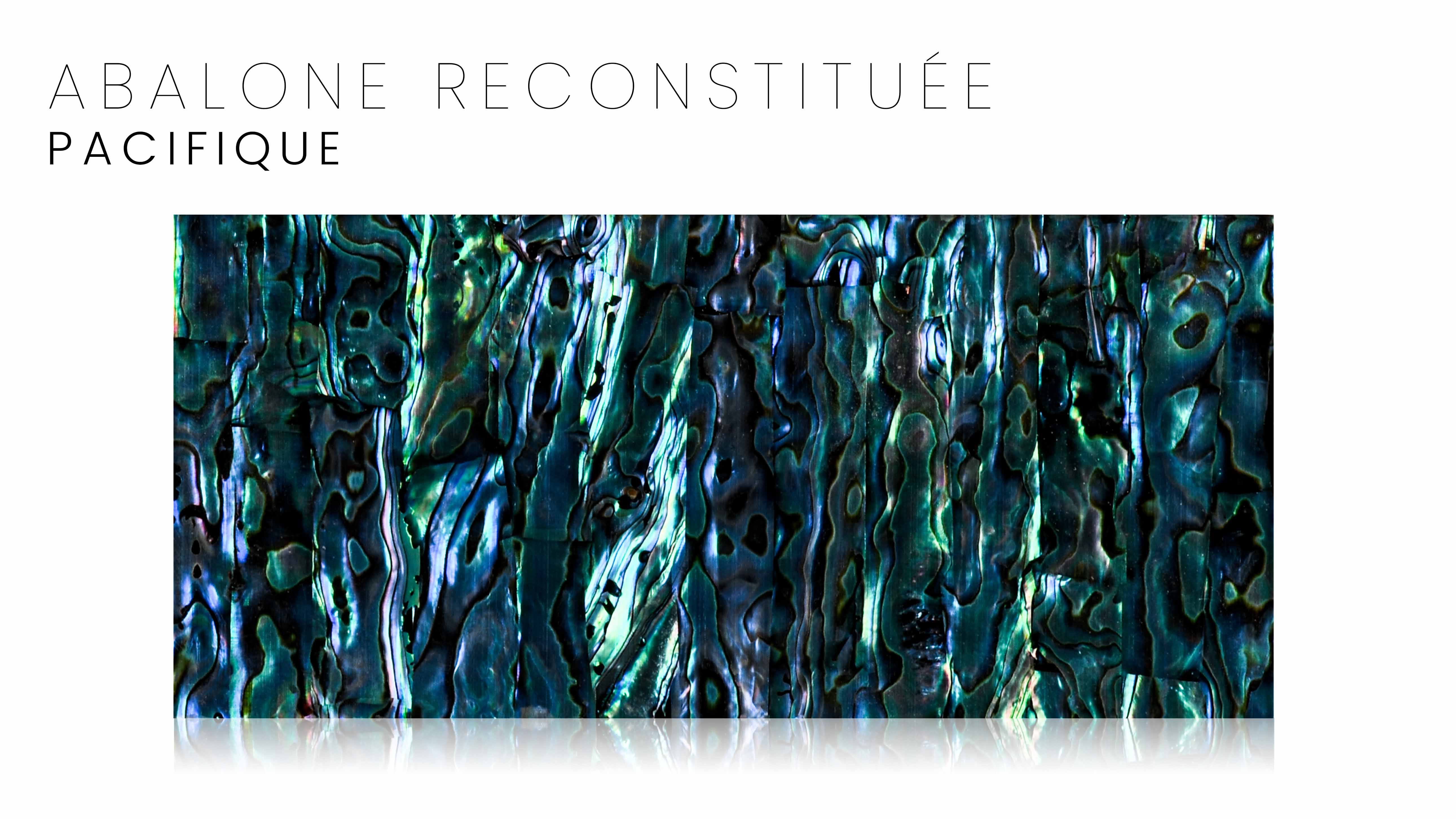
3. Characteristics of Reconstituted Abalone in PMMA Resin
One of the main characteristics of reconstituted abalone is its robustness. Thanks to the addition of PMMA resin, this material is more resistant to shocks, wear, and environmental conditions than natural abalone shells. Aesthetically, reconstituted abalone retains the multicolored reflections characteristic of natural abalone, ranging from blue to green with golden and purple hues. This depth of color and texture makes it a popular choice for knife handles, offering a unique visual appeal.
4. Advantages of Reconstituted Abalone for Artisans
Artisans particularly appreciate reconstituted abalone for its workability. Unlike raw abalone shell, which is often fragile and difficult to work with, the reconstituted version offers easier cutting and polishing. Moreover, the PMMA resin makes the material less prone to cracking or chipping, which is essential for creations that must withstand regular use, such as knife handles. Reconstituted abalone thus combines aesthetics, functionality, and practicality, while allowing great freedom in design and customization.
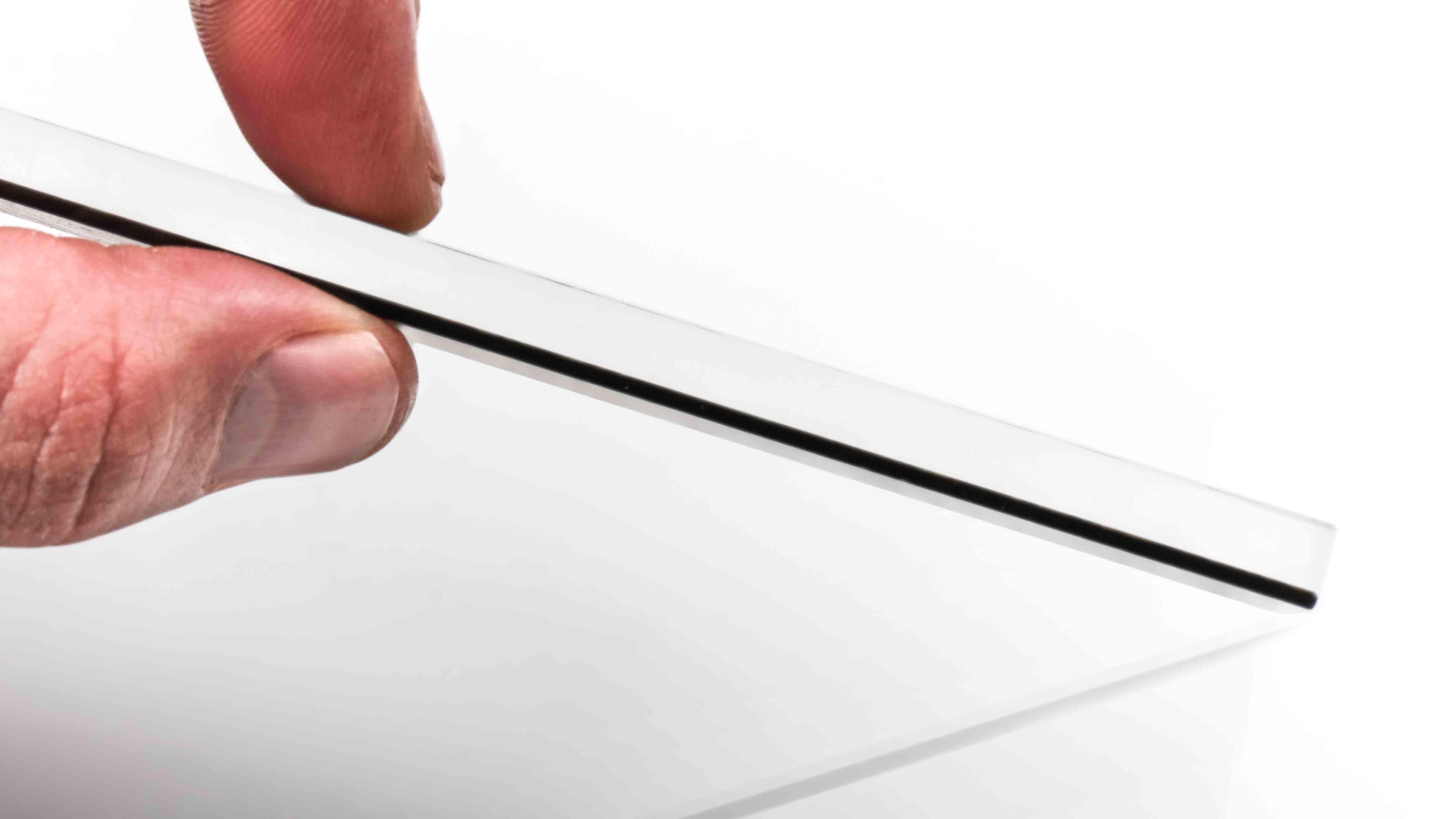
5. Tips for Working with Reconstituted Abalone
Working with reconstituted abalone requires some precautions to preserve its natural beauty while making the most of its advantages. Here are some tips for successful crafting projects:
- Use the right tools: Although more robust than natural shell, reconstituted abalone is still delicate to polish. It is recommended to use low-speed tools to avoid generating too much heat, which could damage the resin.
- Wear protective equipment: The dust generated during cutting and sanding can be irritating. A protective mask and goggles are recommended.
- Polish carefully: After shaping, polishing is crucial to reveal the depth of abalone's colors. Use fine polishing tools to achieve a smooth and shiny surface.
6. Abalone Throughout History
Abalone has played an important role in the history of many cultures. In Native American culture, for example, abalone was used as currency and sacred ornament. In China, abalone shell has been used for centuries in traditional medicine for its supposed healing properties. Similarly, in the Pacific Islands, abalone was considered a symbol of prestige and was often worn by chiefs or used in important ceremonies.
7. Anecdote about Abalone: Symbol of Prestige and Spirituality
In many cultures, abalone is associated with the sea and spirituality. Among the Maori of New Zealand, for example, the abalone shell (or paua) is a symbol of prosperity and spiritual power. It is common to see sculptures or jewelry inlaid with paua in Maori ritual objects, where the shell is believed to represent the eyes of ancestors.
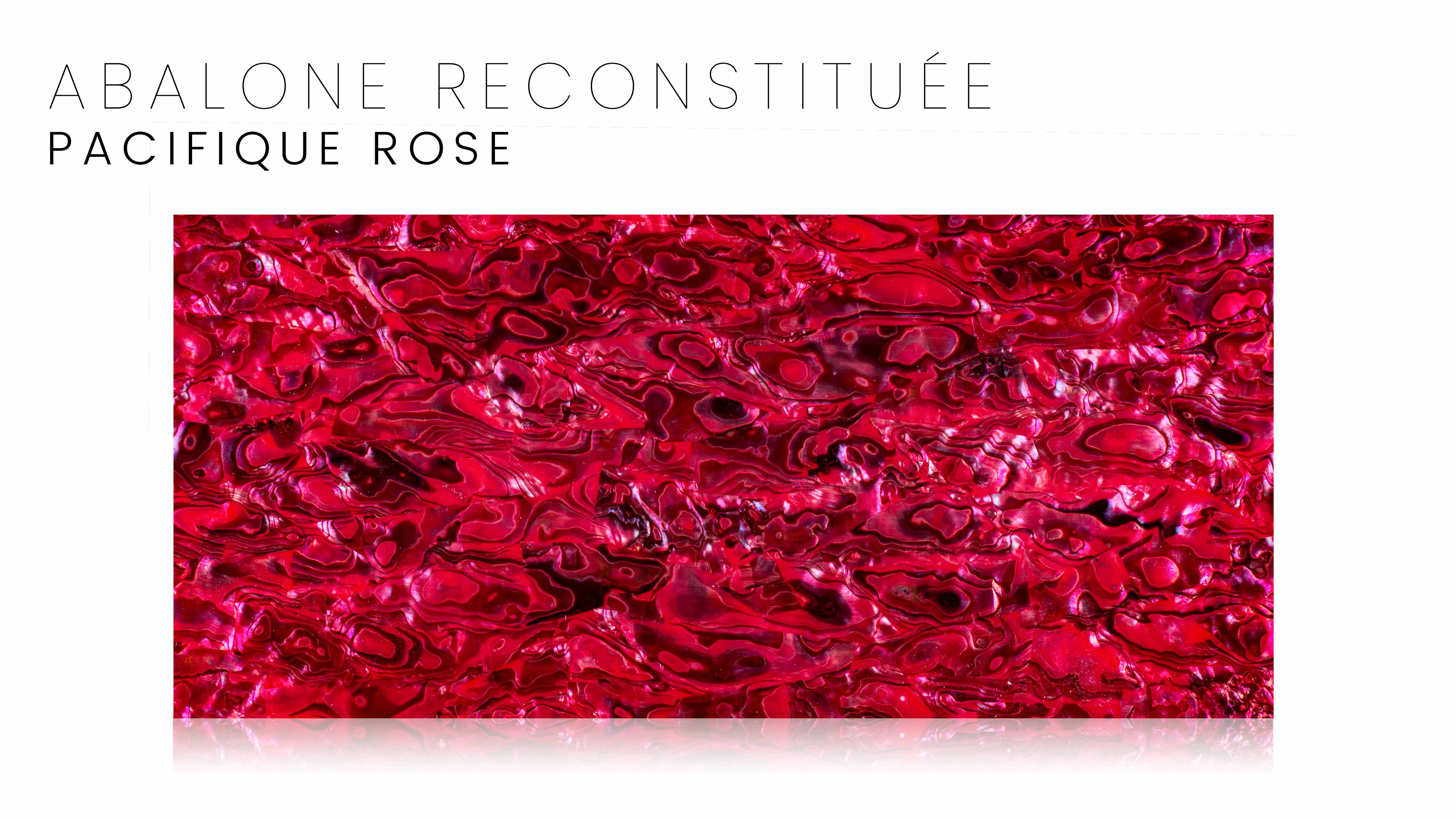
8. Modern Uses of Reconstituted Abalone in Craftsmanship
Today, reconstituted abalone is primarily used in fields such as jewelry, decoration, and cutlery. In the world of knife makers, this material is prized for creating exceptional knife handles, often used for unique pieces or custom knives. Its shiny appearance and captivating reflections make it an ideal choice for artisans looking to stand out.
9. Why Choose Reconstituted Abalone for Knife Handles?
Compared to other materials such as wood, metal, or even bone, reconstituted abalone offers a unique blend of beauty and durability. It is not only resistant but also lightweight, making it practical for knife handles intended for daily use. Additionally, its natural and iridescent aesthetics add a touch of luxury that few other materials can match.
10. Aesthetics and Style: The Visual Impact of Reconstituted Abalone
Reconstituted abalone is famous for its luxurious appearance, capable of transforming a utilitarian object into a true work of art. The changing colors of the nacre capture light in a unique way, adding a fascinating visual dimension to craft creations.
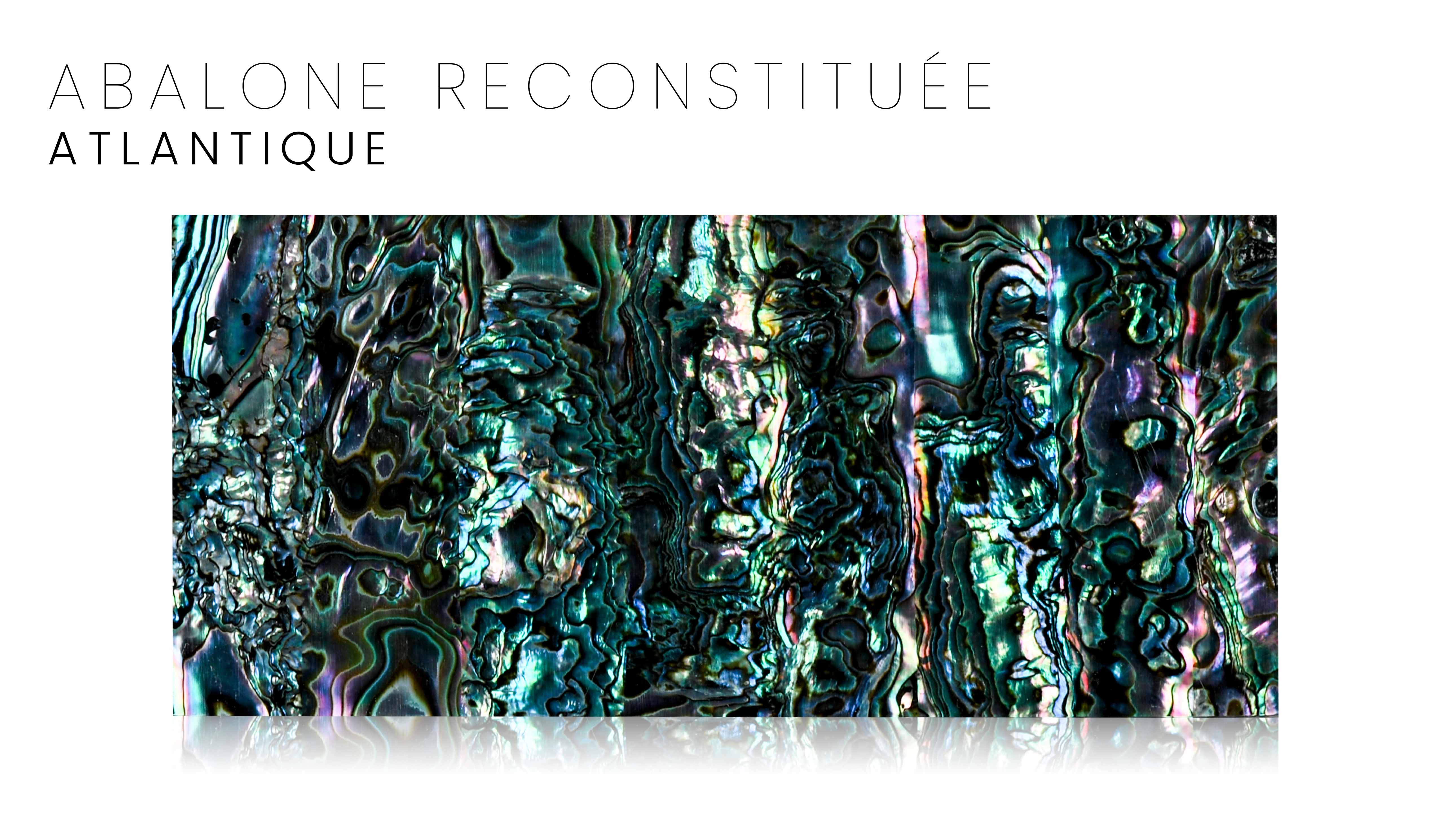
11. Maintenance and Durability of Reconstituted Abalone
Although reconstituted abalone is more robust than natural shell, it requires some care to preserve its shine. Here are some recommendations:
- Avoid prolonged exposure to water: While resistant, excessive exposure to water can dull the surface.
- Regular polishing: Periodic polishing helps maintain the iridescent shine of the surface.
- Proper storage: Store abalone objects in dry conditions and away from direct sunlight.
12. How Mercorne Selects and Offers Reconstituted Abalone
Mercorne is committed to offering the highest quality materials to its artisan clients. Each batch of reconstituted abalone is carefully selected to ensure uniformity in color, shine, and durability. This rigorous selection process allows artisans to work with reliable materials that meet their creative and technical requirements.
13. Steps to Order Reconstituted Abalone from Mercorne
Ordering reconstituted abalone from Mercorne is simple and efficient. Just visit Mercorne's product page, select the desired color and size options, then complete your order online. The platform guarantees fast and secure delivery, as well as customer service available for any questions.
14. The Global Market for Reconstituted Abalone
Reconstituted abalone is gaining popularity in the global market, primarily due to its durability and increased availability compared to natural abalone. Moreover, its use is no longer limited to cutlery but extends to other forms of high-end craftsmanship.
15. Conclusion
Reconstituted abalone in PMMA resin is a top choice for artisans seeking to combine beauty, durability, and prestige in their creations. Whether for knife handles or other objects, this material offers unmatched aesthetics while ensuring ease of work. Mercorne, as a leading supplier, is committed to offering the best solutions for your artisanal material needs.
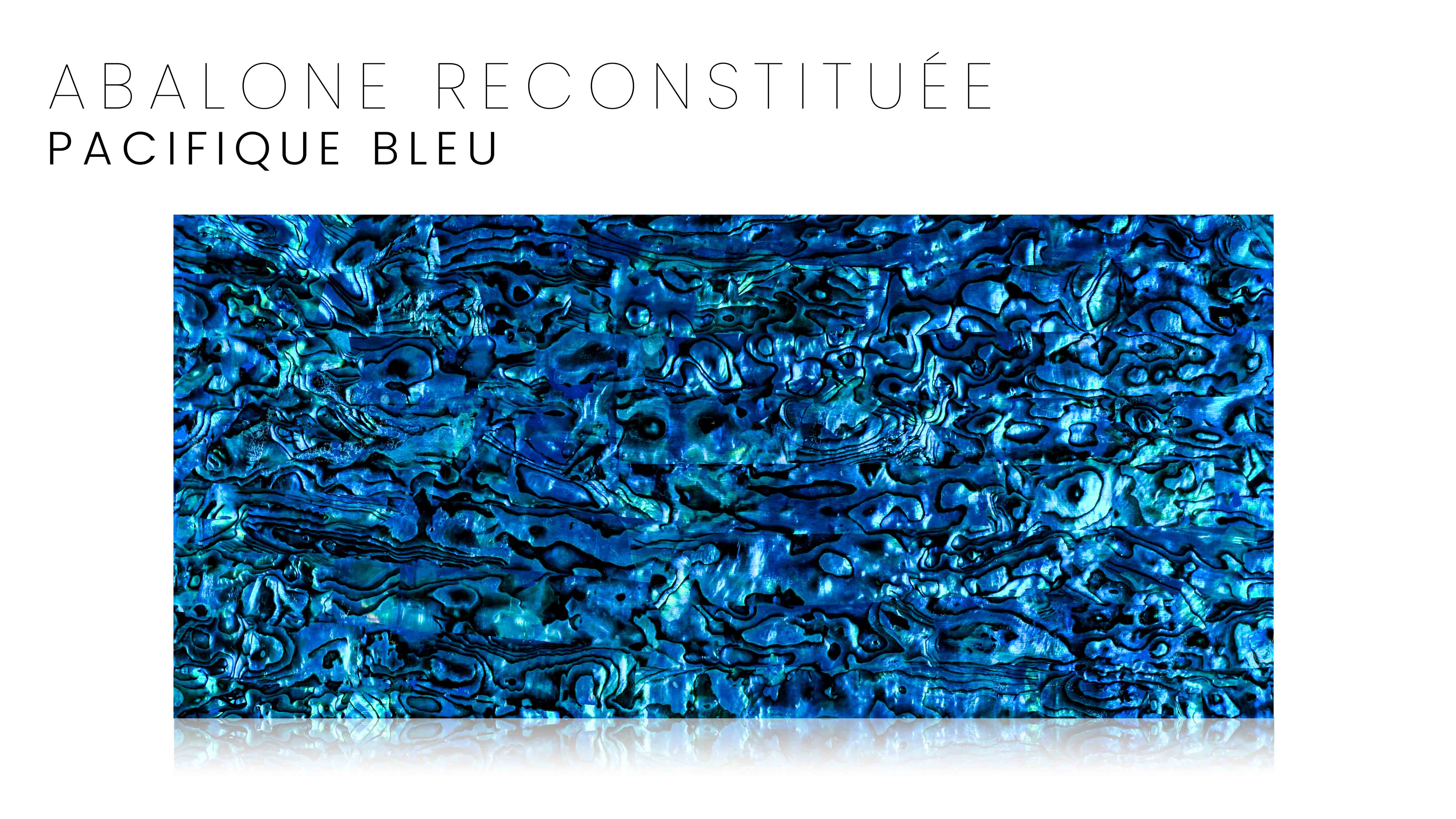
FAQ: Frequently Asked Questions About Reconstituted Abalone
-
What is reconstituted abalone?
Reconstituted abalone is a material made from crushed abalone shells mixed with PMMA resin for enhanced durability and ease of work. -
What are the advantages of reconstituted abalone compared to natural abalone?
Reconstituted abalone is more resistant, easier to work with, and less prone to cracking or chipping than the natural version. -
How do you maintain a knife handle made of reconstituted abalone?
It is recommended to avoid prolonged exposure to water and to polish regularly to maintain its shine. -
Is reconstituted abalone suitable for everyday use objects?
Yes, thanks to PMMA resin, reconstituted abalone is durable and perfectly suitable for daily use. -
Is it difficult to work with reconstituted abalone?
No, this material is easier to shape and polish than natural shell, making it an excellent choice for artisans. -
Why is reconstituted abalone valued in cutlery?
Its unique aesthetics, durability, and lightness make it an ideal material for knife handles.
In Same Category
- CALCEON – by RAFFIR – Unique beauty forged underwater
- Jamaican Rain Tree (Brya Ebony)
- Everything You Need to Know About Bog-Wood – An Exceptional Material for Artisans
- Seafoam Block: A Unique Material for Crafting and Knife Handles
- The Use of Drill Bits and Taps in Knife Making: Techniques and Advantages

Comments
No comment at this time!
Leave your comment